New Data Shows the Top Sustainability Opportunities
The United States ranked #29 out of 180 countries on the 2017 Global Sustainability Competitiveness Index (GSCI). This puts the US behind many European countries and barely ahead of China in terms of its ability to “generate and sustain inclusive wealth without diminishing the future capability of sustaining or increasing current wealth levels”. The survey also predicts that the US will continue to fall behind if proposed policies are implemented. Here’s why that matters: the GSCI found that higher sustainability equals higher wealth. Clearly, there’s a lot of room for improvement. So, what are the lessons learned? What are the top sustainability opportunities for the US?
Natural capital
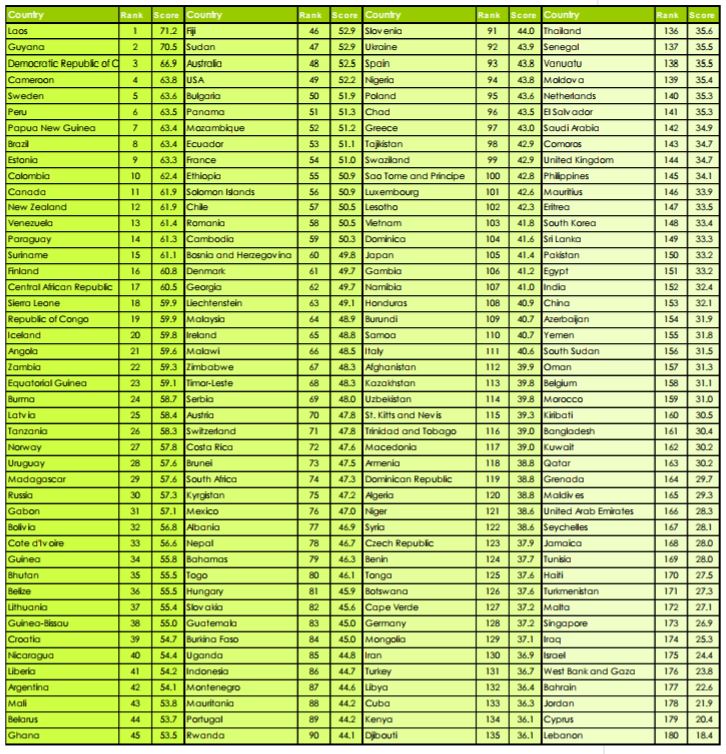
Image Source: Solability
Natural capital measures the availability of natural resources like land, water, and energy.
The US ranked #49 due to pollution and depletion of resources — especially fresh water.
While exploitation of natural resources can lead to a temporary boost in production, it is harmful to a country’s economy in the long-term.
On the flip side, countries can increase their natural capital by investing in restoration and greening projects.
Resource intensity
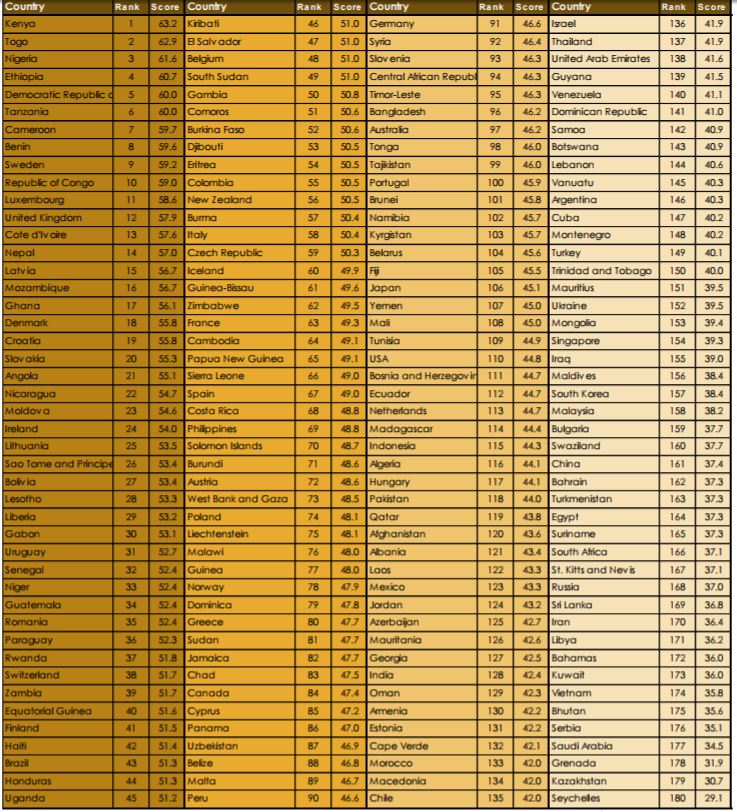
Image Source: Solability
Resource intensity measures how efficiently countries use their available resources.
Importantly, countries that use resources more efficiently have more competitive economies.
The US ranked #110 in resource efficiency, due in large part to dependence on non-renewable resources like coal and oil. These resources are expected to increase in price as they become less readily available.
The research suggests that developed countries can regain competitiveness by managing water usage and investing in renewable energy.
Social capital
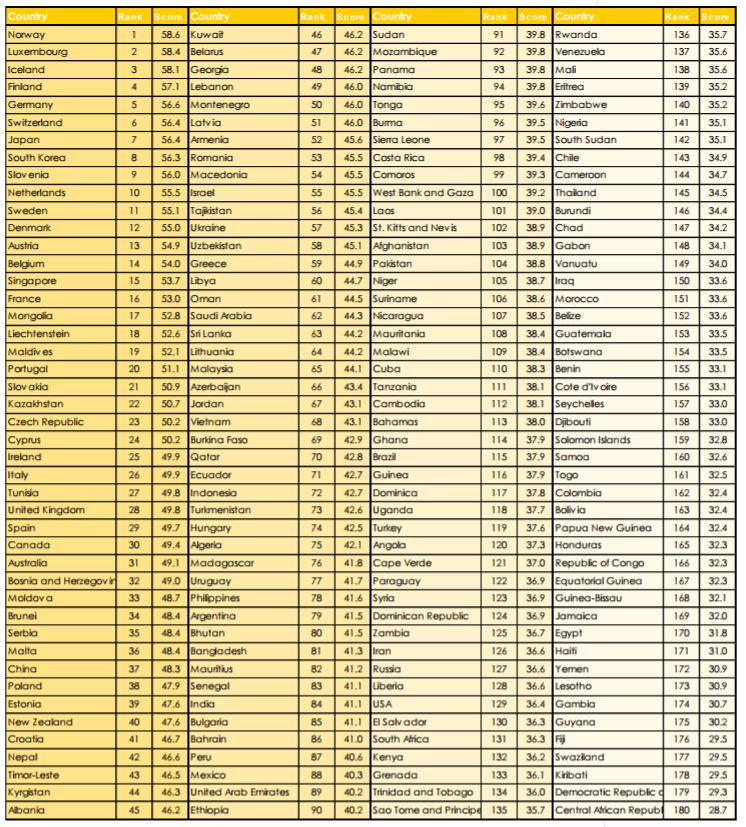
Image Source: Solability
Social capital includes aspects like equality, health, public services, community development, and security.
The US ranked a grim #129 — below Liberia and just above El Salvador — due to high crime and low availability of health services.
While proposed healthcare cuts could lower the US’ rating further, investments in health and social welfare will bump countries like China up the ranks.
Intellectual capital
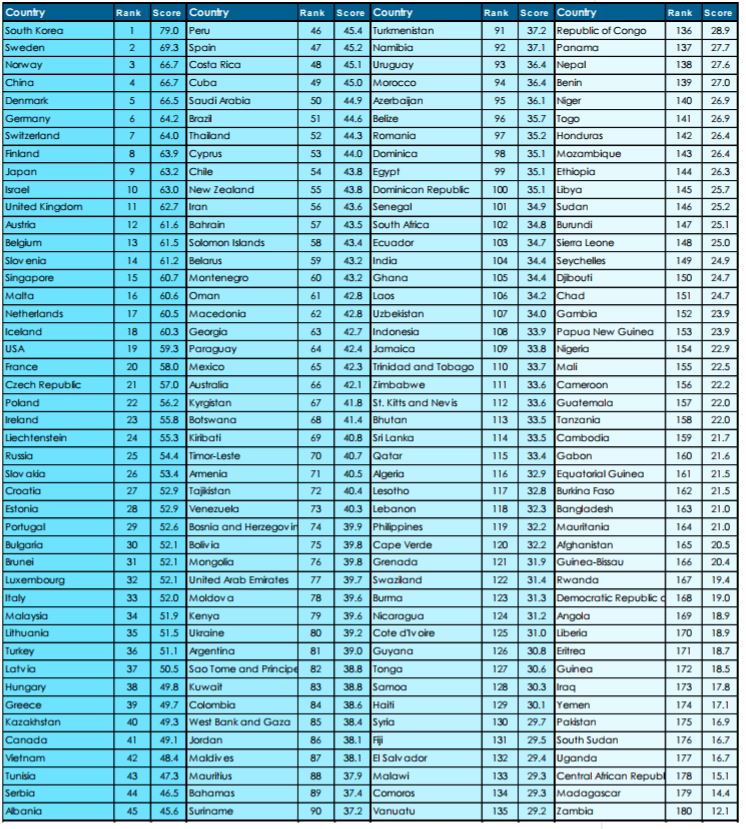
Image Source: Solability
Intellectual capital measures a nation’s ability to generate wealth and jobs through innovation and value-added industries.
Significantly, countries that have slashed investments in education and R&D have struggled to recover from the 2007/2008 financial crisis.
The US ranked #19 due to abysmal student performance and declining R&D budgets.
Proposed policies like budget cuts and privatization of the educational sector could drop the rank further, while countries like China are investing further in higher education and R&D.
Governance efficiency
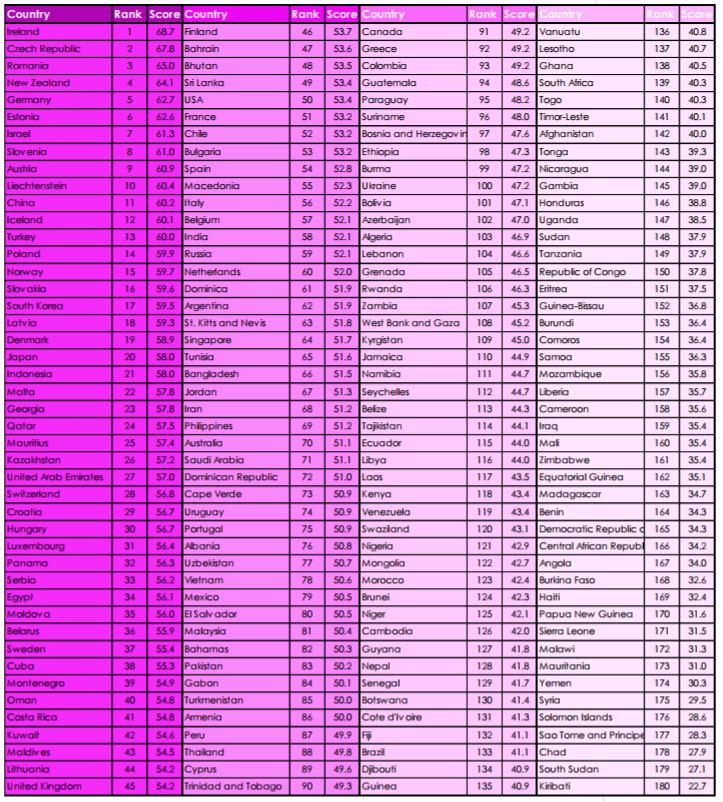
Image Source: Solability
Governance efficiency evaluates the environment the government provides for businesses and society through policies and budget allocation.
The US ranked #50 based on indicators like investments, infrastructure, and public services.
One key takeaway is that deregulation doesn’t make countries more competitive in the long run. What does? Investment in infrastructure like roads, rail networks, and health facilities.
The bottom line
The US currently ranks #29 in sustainable competitiveness, and is expected to rank lower if proposed policies are implemented.
While this represents a national problem, individual companies can take measures to improve their efficiency and insulate against diminishing natural resources. For more information, explore our corporate sustainability software our download our climate risk management guide to see how to climate-proof your company.
